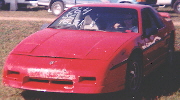Hmmmm.... better re-post this info, lots of carzy people out there.

Mixing traditional green with dex-cool will not sluge a system. That is a myth just like the popular Fiero myths.
Mixing them is not recommended because it defeats the purpose of having dex-cool in the first place. Traditional green is only good for 2 years. You need to change your coolant every 2 years. Dex-cool is good for 5 years. When you add green to your dex-cool it is not longer good for 5 years. It also goes without saying it's common sense not to mix them.
Dex-Cool and traditional green antifreeze are both Ethylene Glycol based.
Conventional coolants (the green stuff) which use silicates, phosphates, borates, nitrates, and amine additives to eliminate corrosion. These additives are abrasive to water pump seals, and silicates are especially unstable and drop out of solution and form a gel after time. All of these conventional inhibitors deplete after a short time, which is why conventional coolant must be changed 2 years.
The unique corrosion inhibitor technology in Dex-Cool is based on the use of two organic acids, which are synergistic and combine to form carboxylates. Texaco refers to this as Organic Acid Technology (OAT), or Carboxylate Technology. The corrosion inhibitors used in Dex-Cool deplete very slowly thus eliminating the need for traditional additives, or frequent change intervals.
The only reason you hear "not recommend using Dex-Cool in older vehicles" is because the additives in Dex-Cool can eat away at copper/brass radiators and high lead solder seams. That does not apply to Fieros.
Rules of use...
1. Keep the cooling system filled. In fact, fill the reservoir bottle to “Hot” level when the system is cold. Problems arise when a system’s coolant level is not maintained. (Fleet vehicles receiving regular maintenance, and with reservoirs kept slightly above normal, do not show signs of contamination. This even applies to the specific “problem” vehicles.)
2. The coolant problems found in this survey were caused by system contamination, and not due to the breakdown of DEX-COOL.
3. Check and keep the pressure cap clean and functioning. A contaminated and/or malfunctioning cap causes low coolant levels, which in turn causes overheating and a greater loss of coolant: the notorious vicious cycle. No matter what the vehicle, if the cooling system acts suspiciously, test the pressure cap.
4. On the ST vehicle models mentioned in the GM DEX-COOL video, you “must” replace all suspect radiator caps, especially those with a Drop-Center design, with a Stant Model 10230 or 11230 (Spring-Center type). (Just do it.)
5. Make sure that the coolant is at a 50-50 mix. Often, the flush water was not being removed from the engine block. Consequently, when a 50-50 mix is added to the system the resultant mixture could approach 30-70. Like any fluid that has been diluted beyond its recommended levels, the lowered level of inhibitors will not be able to protect the coolant system effectively. Low levels of inhibitors can cause pitting on aluminum surfaces and general corrosion of cooling system metals.
6. A safe method of achieving a true 50-50 mix is to first determine the actual capacity of the system (use the owner’s manual). Then add 50% of “that” amount of undiluted DEX-COOL (or any coolant), and top it off with water.
7. Mixing a “green” coolant with DEX-COOL reduces the batch’s change interval to 2 years or 30,000 miles, but will otherwise cause no damage to the engine. In order to change back to DEX-COOL however, the cooling system must first be thoroughly drained and flushed.
8. Bacteria cannot live in a hot, Ethylene Glycol environment and is therefore not a threat to DEX-COOL.
9. While there have been intake gasket failures on CK Series, V8 powered vehicles for various reasons, DEX-COOL has never been found as a cause.
10. Use a refractometer to check the condition of DEX-COOL. Its inhibitor package is strong enough that if the batch still provides proper freeze protection, it is probably still providing proper corrosion protection as well.
11. DEX-COOL can handle the minerals in hard water better than silicated conventional chemistry coolants. Drinkable water is suitable for top off.
12. In ST Blazer applications where the radiator cap is mounted at an angle to the ground, the vehicle is more susceptible to radiator cap contamination and its related problems. The Stant 10230 is a wise choice for these vehicles.
------------------

Profile? In 20 years... Auto Detailing, Auto Body, Classic & Antique Restorations, Mechanic, Engine Performance Specialist, Porsche-Jaguar Tech, Wholesaler, Sales, Independent Full Service Repair Shop, Vehicle Vinyl Graphic Design and hard-core auto / aviation enthusiast... now searching for a new career. What a ride!





















